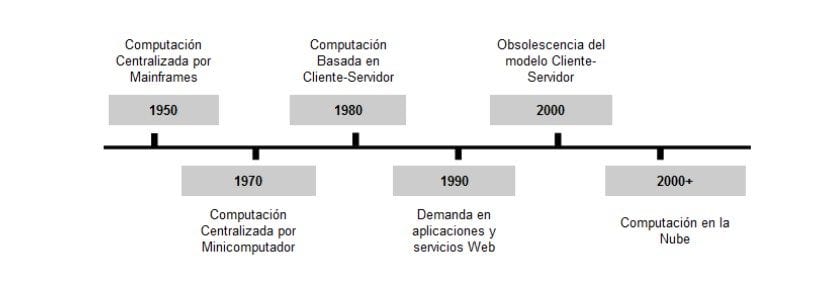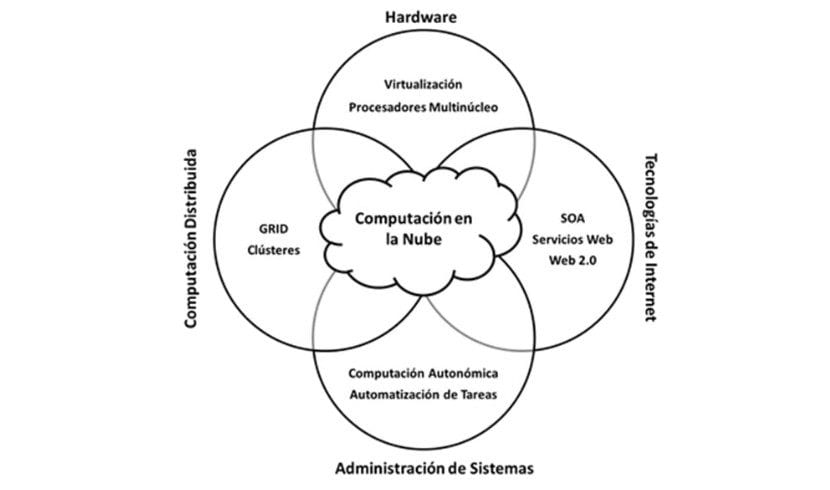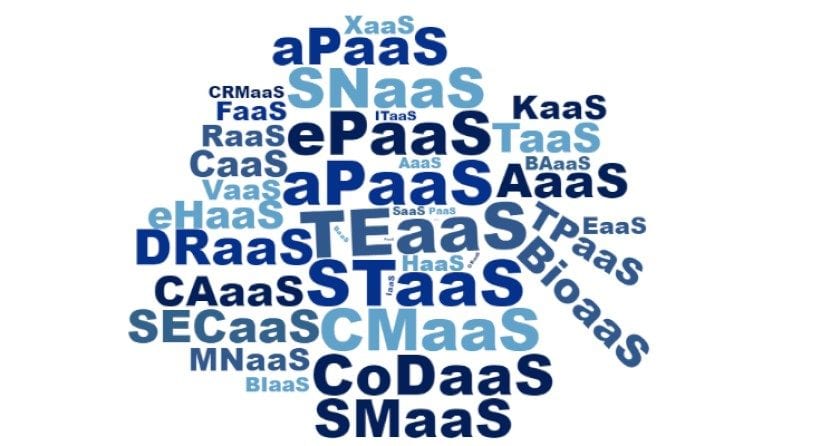
XaaS: Cloud Computing - Everything as a Service
The Software since its creation has been naturally divided into 3 categories which are: Systems, Programming and Applications. And the latter, in turn, has gradually evolved from Applications: Native, Web, Hybrid, to Progressive and Distributed.
Along with Applications have been migrating to the Cloud (Internet) It is gone consolidating a concept or a work and business model known as "Everything as a Service", mostly known by its name and acronym in English as: Anything as a Service or Everything as a Service (XaaS).
Current outlook
XaaS
XaaS is currently the new paradigm for the cloud computing market and whose growth trend for the coming years will have a great impact on the Telecommunications, Big Data and Internet of Things (IoT) segments.
As XaaS is a technological concept that encompasses several concepts related to technological innovation in the cloud, which generates new ways of generating and adding value to organizations, both public and private.
Convergence and Hyperconvergence
In itself, XaaS points to the multiple and growing IT Services that Organizations currently access thanks to the Internet and the great transformations that this brings to them, the business models and the shift towards hyperconvergence.
Understanding as IT convergence the union or fusion of several IT concepts or technologies, mostly of Computing Center Infrastructures (Datacenters), such as: Processing, Storage, Networks, Telecommunications, in a single physical platform (Chassis, Machine) or Hardware.
As IT hyperconvergence to a software-defined infrastructure that separates the operations of the HW infrastructure from the system and converges them at the level of a Hypervisor in a single block.

Services
This new paradigm of «as-a-service» (as-a-service) is a business model, in which the structure of the Organizations and their operations is thought of as a service platform. The more critical a process is within a structure, of migration, the more difficulties it faces. And this is where the XaaS model excels.
The use of the XaaS model in Organizations has the benefit of facilitating the resolution of difficulties in the IT field, while progressing in situations in which they have the possibility of growing and expanding, allowing you to move quickly from one market (niche) to another and from one business model to another.
On the other hand, the XaaS model allows rapid scaling in the face of a surprise demand requirement, freeing up management resources, in order to allow Organizations to dedicate themselves fully to the business and its growth, instead of the infrastructure.
XaaS is a ubiquitous business model, providing a globalized presence using the cloud. Strong at the critical points of the IT infrastructure making it not a stumbling block for business growth and transformation.

Related Concepts
There are a large number of concepts, models or technologies related to the paradigm of "as-a-service" (as-a-service). That is, although the best known XaaS are usually: Software as a Service (SaaS, Software as a Service), Platform as a Service (PaaS, Platform as a Service) and Infrastructure as a Service (IaaS, Infrastructure as a Service), each time more types emerge, among which we can find the following:
PREMIUM QUALITY
- Hardware as a Service (HaaS, Hardware as a Service)
- Storage as a Service (SaaS)
- Database as a Service (DBaaS, DataBase as a Service)
- Disaster Recovery as a Service (DRaaS)
- Communications as a Service (CaaS)
- Network as a Service (NaaS)
- Monitoring as a Service (MaaS)
- Containers as a Service (CaaS, Containers as Service)
- Functions as a Service (FaaS, Functions as Service)
- Security as a Service (SECaaS, Security as Service)
Others less known or implemented are usually:
- Management as a Service (MaaS)
- Business as a Service (BaaS, Business as a Service)

And in summary form, the 3 major XaaS concepts or models can be described as:
Software as a Service (SaaS, Software as a Service)
When the provider provides apps that run in the cloud and that can be accessed by the client through various devices, with lightweight interfaces (such as a web browser) or through interfaces (API). That is, it manages the applications and other underlying resources (Network, Servers, Operating Systems, Storage, among others).
Platform as a Service (PaaS, Platform as a Service)
When the provider provides the possibility of deploying its own or client's apps on its cloud infrastructure, while the client maintains control over them. The provider takes care of managing all other underlying resources.
Infrastructure as a Service (IaaS)
When the provider provides processing, storage, networking and other critical computing resources on which the customer can implement and run operating systems, storage and applications.

Conclusion
From all this, it is clear to us that "Everything as a Service" is generating a change (migration) of the IT operations of Organizations to the cloud (Internet) through collaborative platforms, accessible from anywhere, with the consequent reduction in operating costs and streamlining of processes.
And that in addition, the XaaS model based mainly on IaaS, PaaS and SaaS is expanding, expanding towards all kinds of components that can be offered as a service. XaaS is extending the advantages of Cloud Computing to any area or process of Organizations, supporting different business objectives, from Human Resources, to Traditional or Computer Security.
In summary, XaaS makes it inevitable that every service in the information technology sphere ends up being offered in the cloud, which will end up strengthening it even more over time.